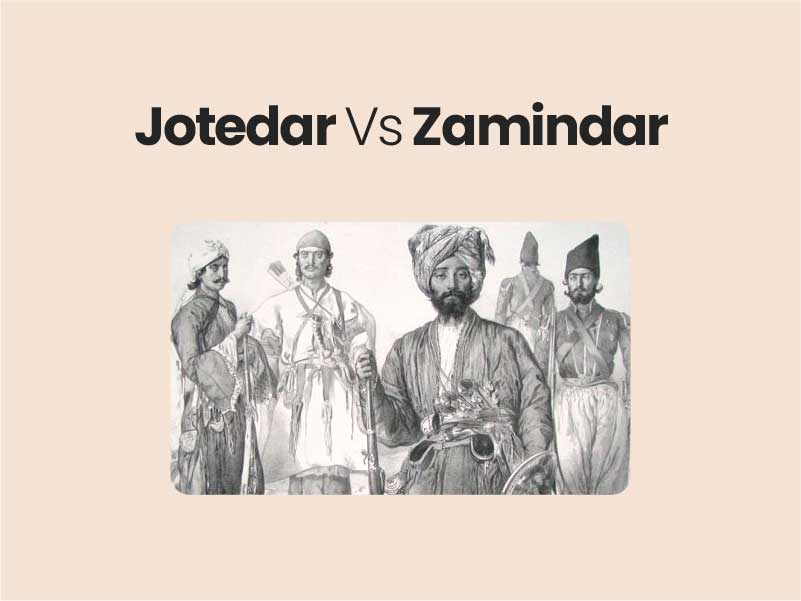Companion@360 → 7 Month programme to sharpen your writing skills → REGISTER NOW

Jotedars
Many zamindars were facing a crisis at the end of the eighteenth century, a group of rich peasants were consolidating their position in the villages. In Francis Buchanan’s survey of the Dinajpur district in North Bengal we have a vivid description of this class of rich peasants known as jotedars.
Significance:
- The Tebhaga movement was led by the share croppers of the Bengal region against the oppressive jotedars in 1946-47.
- The uprising was due to the share cropping system that prevailed in the Bengal. During the early nineteen century a new class of rich peasants known as jotedars emerged in the Bengal region.
- The jotedars collected huge tracts of land in rural areas. They also controlled the local markets, money lending activities, exercised control over the poor cultivators.
- In rural villages these jotedars exercised more control than the Zamindars, who often lived in urban areas.
- The large agricultural areas under the jotedars were cultivated through sharecroppers (also known as bhagadars), who handed over half of the crop after the harvest to the jotedars.
- The jotedars were mainly concentrated in the North Bengal, whereas in other parts of the Bengal they are known as haoladars, gantidars, or mandals.
Jotedar Vs Zamindar:
| Jotedar | Zamindar |
| Jotedars were landed peasentry who used to own large tracts of land. | Zamindars were the owners of land, water, mountains, villages and almost everything under the sun. |
| They generally were quite wealthy. | The zamindars had the power to settle people on their lands, employ them for tilling if fields and other jobs. |
| Jotedars belonged to the upper castes Bengalis. | They also levied taxes on production of crops, handicrafts, fishing etc. |
| This class used to employ the share croppers on landless peasents in their lands for tilling. | After the royalty, zamindars used to wield the highest power in rural Bengal. |
Prelims 2022 Detailed Answer Key
The rise of Jotedars inevitably weakened zamindari authority:
- Within the villages, the power of Jotedars was more effective than that of Zamindars. The Zamindars who often lived in Urban areas whereas the Jotedars were located in the villages and exercised direct control over a considerable section of poor villagers.
- They forcefully resisted efforts by zamindars to increase the Jama of the village, prevented zamindars officials from executing their duties, mobilised ryots, who were dependent on them, and deliberately delayed payments of revenue to zamindar.
- When the estates of the zamindars were auctioned for failure to make revenue payment, Jotedars were often the purchasers.
Which is the best UPSC Test Series Check Now

